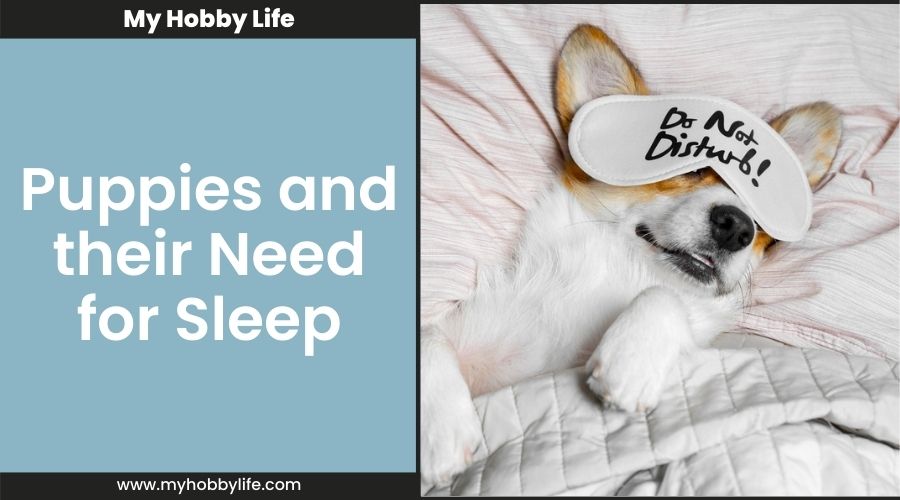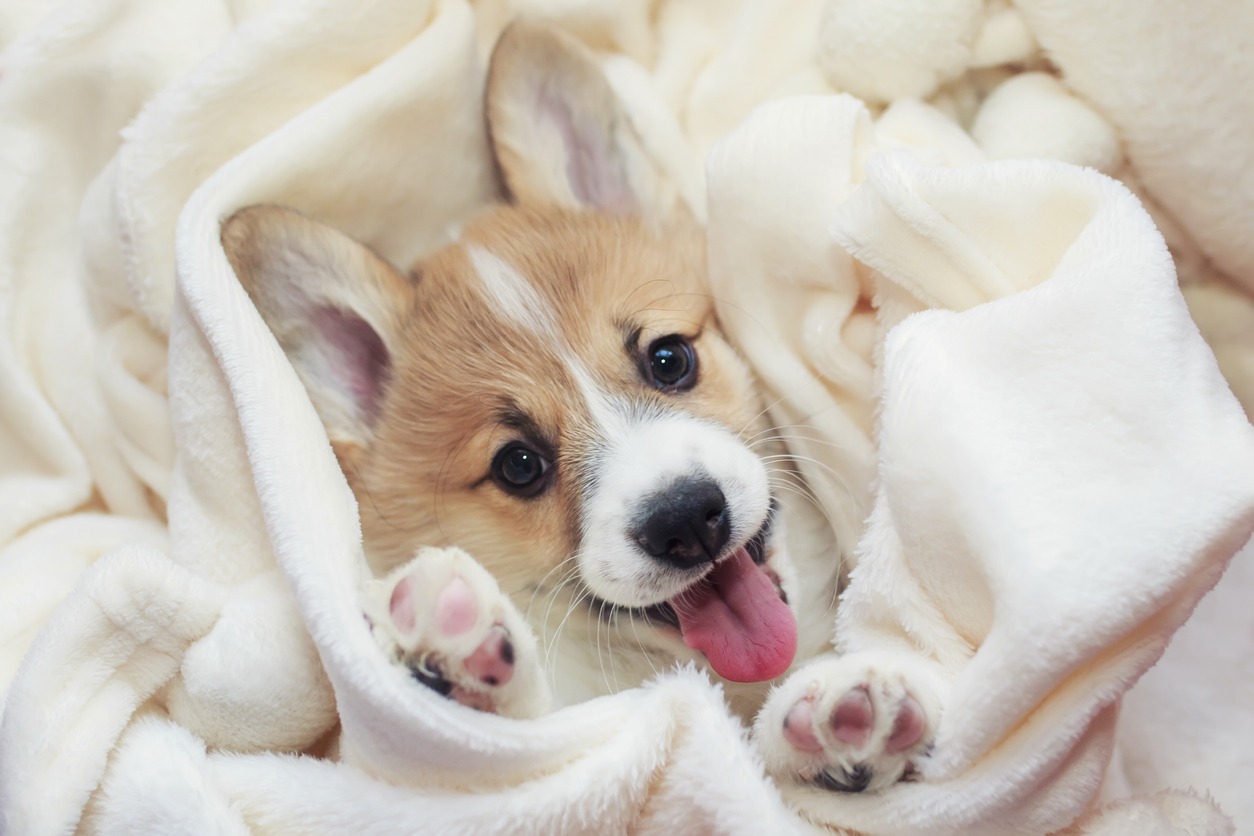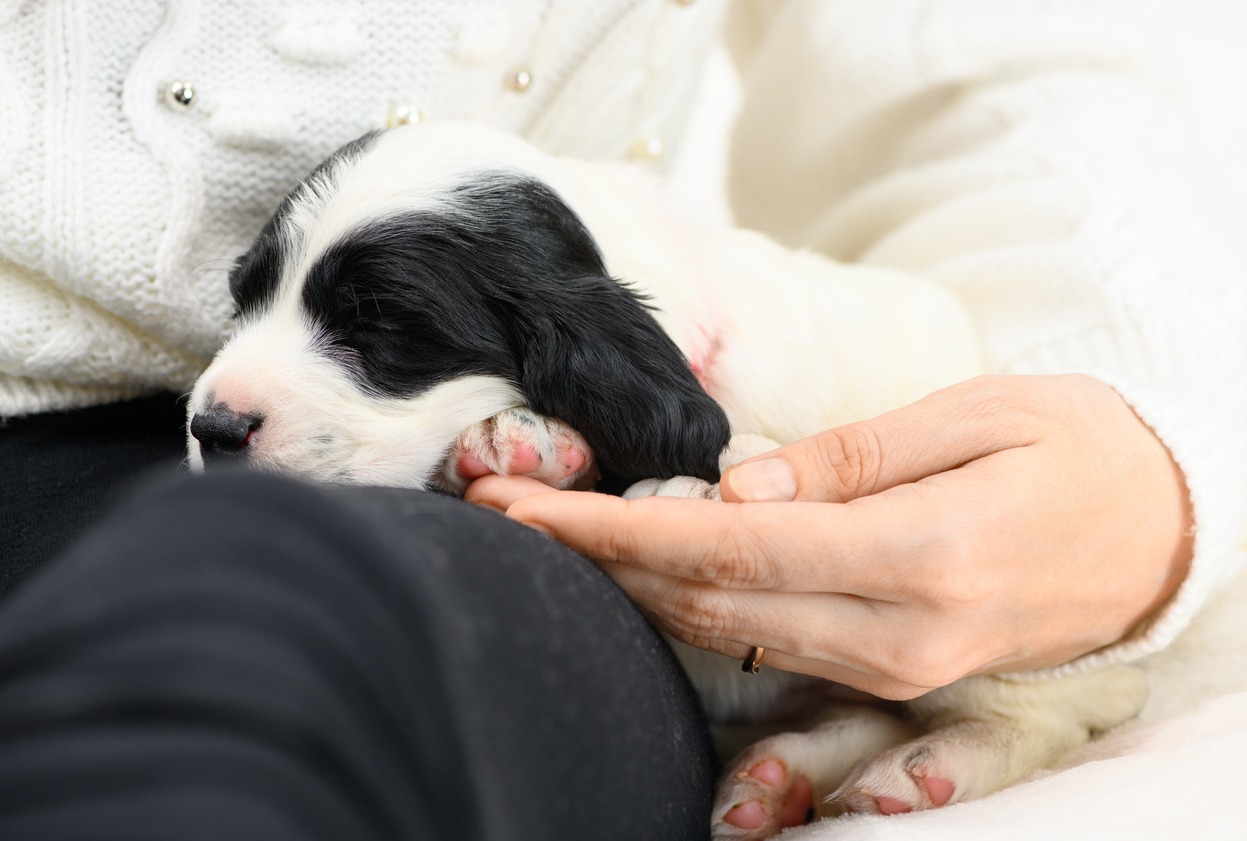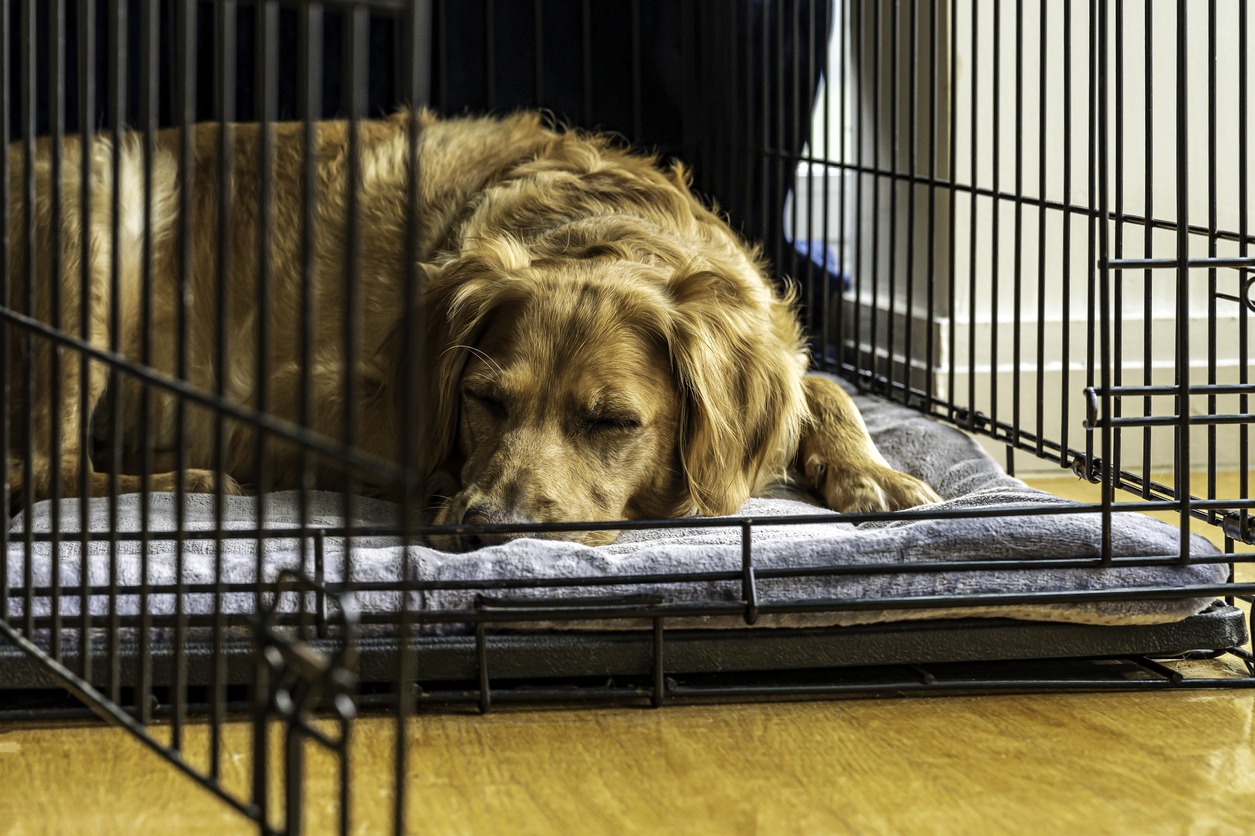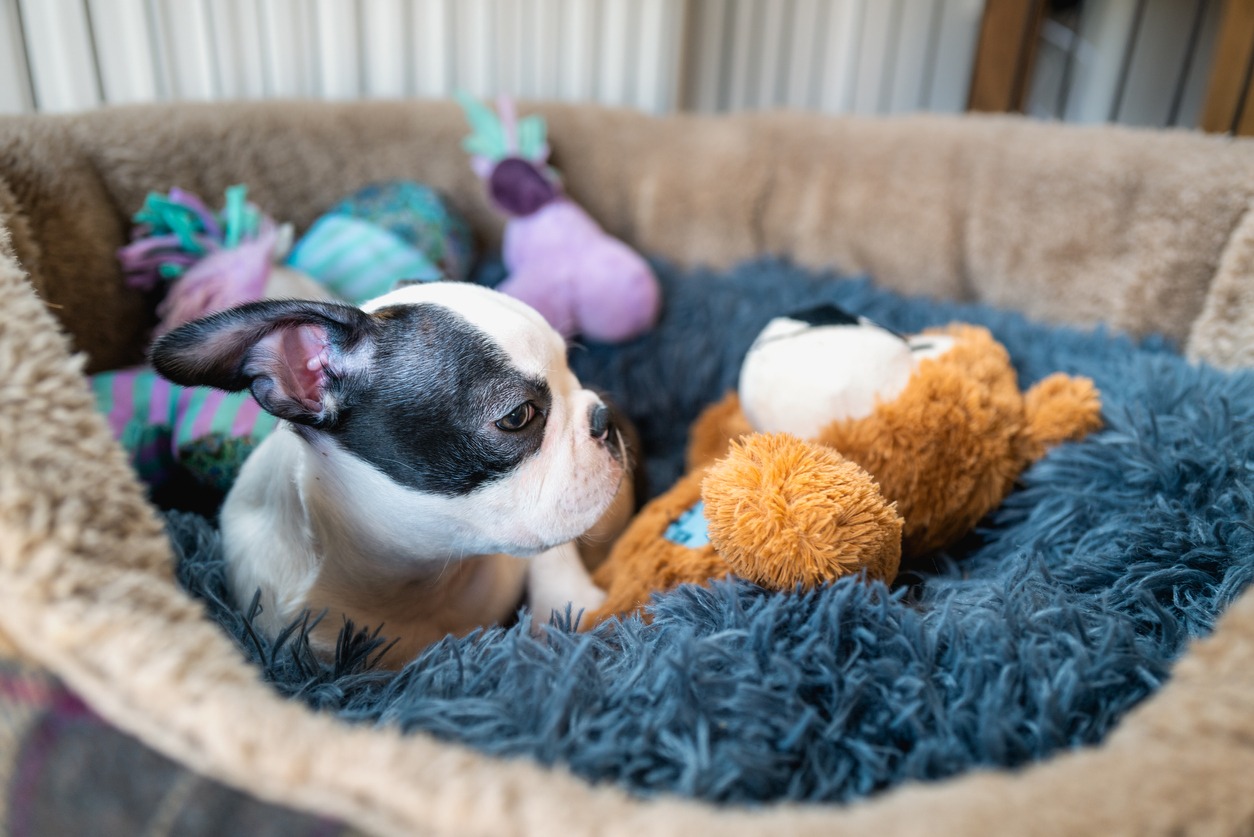Puppies require a lot of sleep both at night and throughout the day, just like a newborn human. The many different dog breeds have quite different sleeping requirements for puppies. Bringing pups home, playing with them, cuddling with them, even feeding them, is so captivating. This joy is frequently marred, though, by the realization that it may be difficult to get a decent night’s sleep for a while because pups may not care about your regular sleeping hours. Well, until they are sixteen weeks old at least, pups are generally very curious about their new home and can be very difficult to put to sleep.
However, you can teach your new puppies to sleep through the night without interruption with the right sleep training and schedule. You should first be aware of where your new puppies will sleep. Your bedroom can be the greatest choice because you can keep a close eye on them there. The utility room or another room in the house would be a better option if you’re one of the many people who find this to be too uncomfortable. Continue reading to know about the different methods to train your puppies how to sleep properly.
1. Putting pups to sleep
Similar to young toddlers, how well puppies sleep is greatly influenced by what they do right before bed. First off, don’t let puppies nap in the evening, not even a little. You must keep your pups occupied and entertained in the evening hours so that when bedtime comes, they will be exhausted and ready for sleep. Second, limit the amount of food and liquids kids consume right before night, ideally no later than two to three hours beforehand. If pups sleep with a full bladder, you’re going to have a very agitated night.
2. Overnight bathroom visits are strictly about business
Puppy potty breaks can be filled with play and entertainment during the day, but at night you should hold off on teaching your puppies to use the toilet. Your new puppies must learn that nightly bathroom trips are solely for business and not for fun. They should be immediately taken to the bathroom, given plenty of time to complete their business, and then immediately put back to bed.
3. Make a wise overnight schedule
Puppies, as opposed to adult dogs, may require several trips to the bathroom throughout the course of the night. Your puppies will become uncomfortable and wake you up if you assume they will do just fine without any overnight excursions to the bathroom. Therefore, whether or whether your new pups wake up, you must establish a strict nightly plan, starting with a predetermined sleeping time and a desirable number of overnight pee visits. Or, if you’re not in the room with them, assign them a specific spot where they can go to relieve themselves.
It could seem during the training that there is no end in sight and that you will never again be able to sleep through the night. Your efforts will be rewarded when your puppy sleeps through the night for the first time; it won’t take long. Your family and your dog will soon be able to sleep peacefully without having to get up to take the puppy outdoors to use the restroom.
4. Purchasing a dog crate
When puppies are still getting used to being apart from their mothers, some owners prefer to purchase a crate for them because it gives them more security. Implementing the crate method from a young age has a number of advantages, such as:
- Simple to maintain, especially if they haven’t really mastered the toilet. Compared to alternative sleeping options, a crate requires far less cleaning.
- Crates are perfect for homes or rooms with limited space because they don’t take up much space and can hold all of the puppy’s blankets and toys.
- When taking the puppy on a trip, the crate can be brought along. The puppy will feel safer and less anxious when traveling in the kennel.
- It provides them with a private area where they may retreat from things like kids or other animals. It is a place of refuge for them where no one can bother them.
Both puppies and dogs love their homes in crates, but you should always make sure the crate is the proper size for the animal. The puppy won’t feel comfortable inside if it’s too small. If it is too big, it won’t feel as secure to them. The puppy should therefore, generally speaking, have adequate room to roam around a little bit and to shift position.
5. Purchasing a tray with bedding
A tray with bedding is another option besides a crate. Some owners prefer this option since it provides the dog more freedom and appears much cozier than a crate. If you want to take this route, you should be aware that puppies, who typically begin their first year of life teething, are prone to gnaw on whatever they can get their hands on, including the brand-new, pricey cushion you just bought for them. While they are still young, you could only want to put down some old cloths or towels because they are more dispensable and it won’t matter as much if they have an “accident.”
The puppy can be left unconfined in the house with no restrictions as a final resort. This is not advised because they aren’t completely potty trained at this age, so you can wake up with a lot of cleaning to do. Another issue is that they might bite and break objects. This might only work if the place is really small and has little clutter. Giving the pet full rein could also encourage undesirable behaviors like morning postman barking.
Conclusion
It is more crucial than ever, especially at this young age, that you lay down all the ground rules and give your furry friend a safe haven to live in. It seems sense that your dog would be impacted by your terrible sleeping habits in a similar way that you would be impacted by your own.
We hoped that this article would assist you and your dog in getting the rest you both need. We also hope that the guides given above will help you successfully train your puppy to fall asleep on its own.
